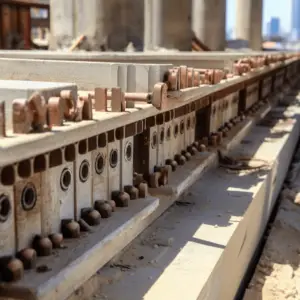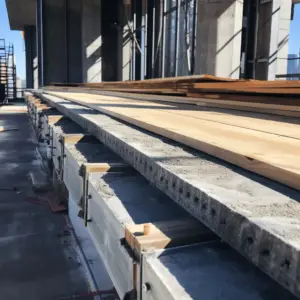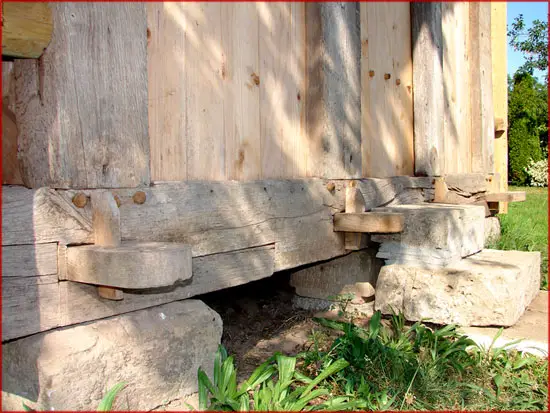Are you new in the construction industry, or you’ve been in the field for a long time trying to differentiate between the sole plate and sill plate? Well, today, you’re in the right place to find your answer.
Sill and sole plates might mean the same thing; therefore, the two terms can be used interchangeably. However, let’s look into the details of each term differently, and later we can note whether they have differences, similarities, or even both.
Generally, a Sill plate is a plate-treated timber used at the top of the concrete foundation from the wall’s bottom. On the other hand, the Sole plate is the plate treated lumber found in the concrete floor and is used to partition a basement.
Does that sound the same? Did you note the difference from the single paragraph? Sill Plate and Soleplate might mean and work for the same thing. However, let’s now discuss each aspect separately;
Table of Contents
Comparing Sole Plate Vs a Sile Plate

What it’s a Sole Plate?
Grout-filled concrete foundation base plates are sole plates. Pumps and compressors are supported level by the plates. Thus, bolt slots or pre-installed anchorage bolts may be needed to secure the machine’s feet to the machined plate, depending on design engineering. Leveling pads, shims, or steel footings are often utilized during installation to level the surface.
Foundation plates are mostly used in machine floors to support heavy gear including generators, pumps, compressors, and motors. Utility distribution installations and industrial constructions use machine base plates to support machinery. The following are lone plate uses:
- Pump platforms
- Pump bases
- Power generator foundations
- Motor bases
- Gas pipeline compressor pads
The Sole plate, also known as the sill plate, base plate, or mudsill in the building industry, is the primary structural beam off a wall. They are usually the first pieces of wood to come into touch with the basement or foundation’s brickwork.
Sole plates are crucial because they serve as the foundation for the building’s exterior walls and floors. There are various ways to make these plates and various things to check for while inspecting, one during a home inspection or professional pest control operation.
Because the Sole plate serves as the basis for a home’s frame or wood walls, it’s critical to start with a sturdy foundation when constructing a house or wall. Sole plates are so important for the general stability of your home. Therefore use the right type of wood and material to secure it correctly so that your building project runs smoothly.
Importance of Sole Plate
Modern constructions frequently bolt or lag the sole plate into the brickwork underneath it. However, it was deemed appropriate to erect houses without bolting the Sole Plate into the masonry base in the past.
Most modern construction rules require contractors to anchor the single sole plate to the masonry base with big bolts or lags. To prevent water from seeping up through the brickwork and into the wood, most builders will place a piece of either corrugated plastic or foam beneath the plate. Such material is known as sill seal, and it is widely employed in modern home construction.
The Sole plate has frequently treated timber or wood resistant to rot and pest, such as cedar or redwood. If these woods are not used, the plates may decay or be attacked by termites, resulting in a potentially dangerous situation where the walls are not physically bonded to the foundation.
However, if such happens, the Soleplate can be replaced by lifting the region affected and removing any rotting or damaged wood. A new woodblock is placed as a replacement to prevent future damage.
What is A Sill Plate?
Some people in the construction business refer to a sill plate as a mudsill. Sill Plate again similar to sole plate. It’s the horizontally anchored board used on a concrete foundation. Sill Plate is positioned beneath the studs set vertically to create the structure’s frame.
The sill plate is the most significant component of a house’s structural frame and it’s the first block of wood in most houses that serves to secure the structure to the foundation. If you look along the top of the stone walls in the basement or crawlspace, you will see the sill plate from your home’s interior. The wall covering and siding hide the sill plates from outside.
Importance of Sill Plate
The sill plate is an important component of any structural system because it provides an even and flat surface to create a framework for construction projects. It solves the problems of sags or height disparities between the frame components built on top of it.
For example, if a building’s frame is entirely concrete, the stud tops may reach varying heights. Mounting them straight onto the foundation without the sill plate is never a good strategy since concrete and frames shrink unevenly with time.
Conclusion; what is the Difference between Sole Plate and Sill Plate?

After doing comprehensive and extensive research, we can now conclude that Sole Plate and Sill Plate typically mean the same thing. Both form the basement and are thus also known as the mudsill or the base plate. You’re never wrong if you use the term sole plate while referring to the sill plate. The vice versa is also true.
Hopefully, you’ve now been able to understand what the sill plate and sole plate mean. The two terms are the same.
The lowest part of a wall where the beams are fastened is called a sill plate, also known as the soleplate. They are necessary to any home and usually fixed to the foundation. If sills are cracked or decaying, flooring may sag.
Architectural sill plates are the bottom horizontal feature of a building that supports vertical elements. Architectural sills are utilized instead of plates. Sill/Sole plates are usually wood. Any material can be used.
You shouldn’t neglect the sill/sole plate when building or rebuilding. The component is securely attached to the concrete foundation, forming a solid layer below the building. It also protects a building’s foundation and frame.


